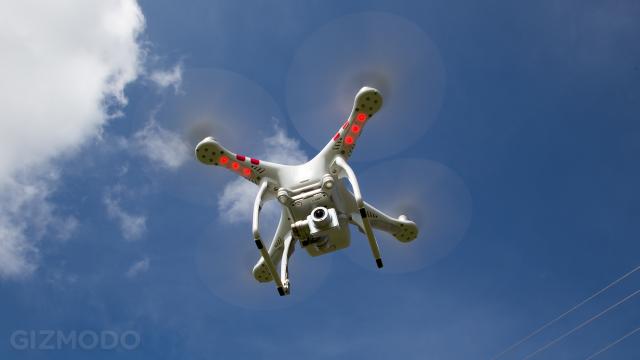DJI has been making remote-control quadcopters for years. Originally, you had to strap your GoPro to it, but last year DJI introduced the Phantom 2 Vision, which had its own integrated camera system. It was pretty sweet, but every tiny turn you took your video shook enough to scramble your viewer’s brain.
Today, DJI unveiled the Phantom 2 Vision+, which includes not only a camera, but also a built-in gimbal with 3-axis electronic stabilisation. Does it make any difference? Holy crap, does it ever!

What Is It?
It’s a small, remote control helicopter that’s absolutely crammed with tech, including GPS, Wi-Fi, and a fully stabilised 14MP camera with an F/2.8 lens that shoots video at 1080p/30.
Why Does It Matter?
Well, aside from being really fun to fly a helicopter that can fly roughly 55km/h and reach heights exceeding 275m (yes, two hundred), it’s outfitted with a very solid little camera. This enables amateur and professional photographers and videographers to get shots that would would otherwise be impossible.
Australian Note: Flying anything above 400 feet (120m) requires Civil Aviation Safety Authority clearance. Be advised if you plan on importing it.

Design
At first glance, you’d think it’s a kid’s toy — it’s basically all white plastic on the outside. From the top down it looks like a big white X, with a plastic two-bladed rotor on each point. It stands on two long, square legs, which also serve to protect the camera in its undercarriage.
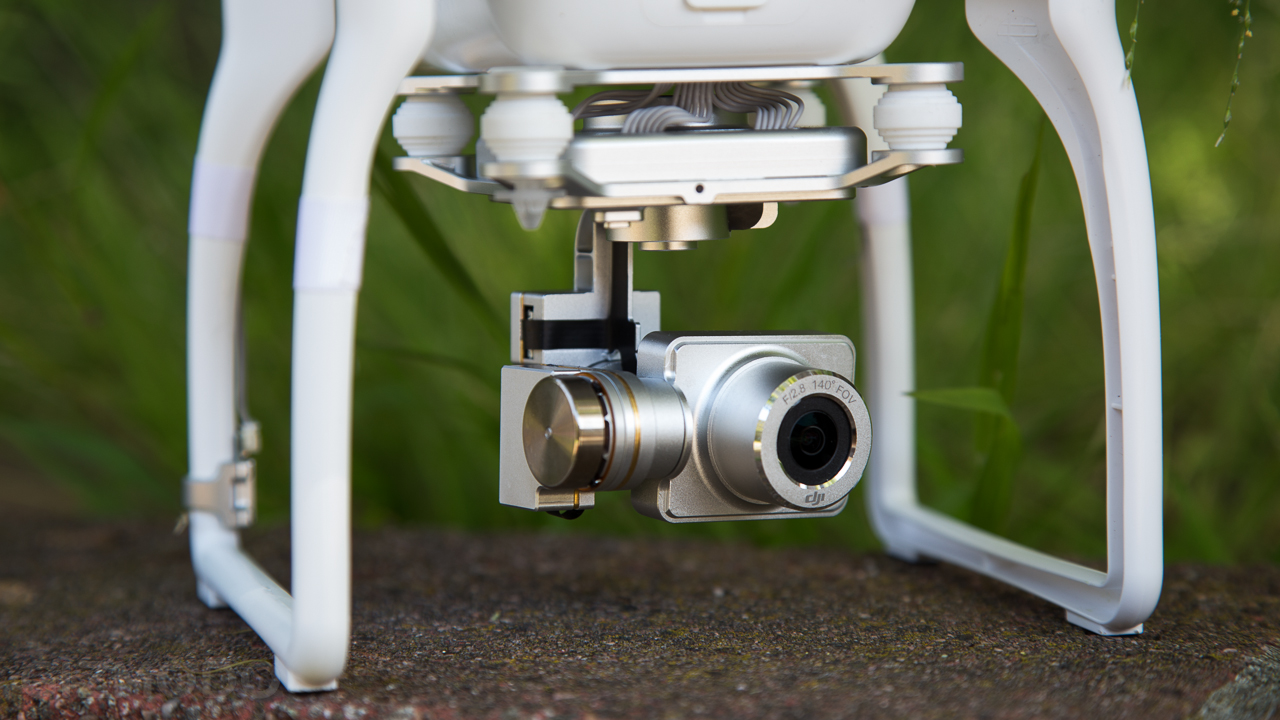
The camera rig is easily the most complex-looking component. It’s on a platform that hangs down from the drone’s body, connected by four, soft, rubber bulbs which help dampen vibration from the motors. Unlike the normal Phantom 2 Vision, the camera has been divided into parts. The hanging platform contains the camera’s brains, micro SD card slot, and micro USB plug, but then a wire goes down and attaches to the camera’s lens and sensor. This is very clever.
The bigger and heavier something is, the bigger and heavier the stabilisation rig has to be. DJI realised that all it needed to stabilise was the lens and sensor, hence the split camera. The result is what looks a half-sized GoPro at the end of a small mechanical arm. The arm, of course, is the gimbal, which provides extremely quick 3-axis stabilisation. It reacts so quickly it’s almost spooky.
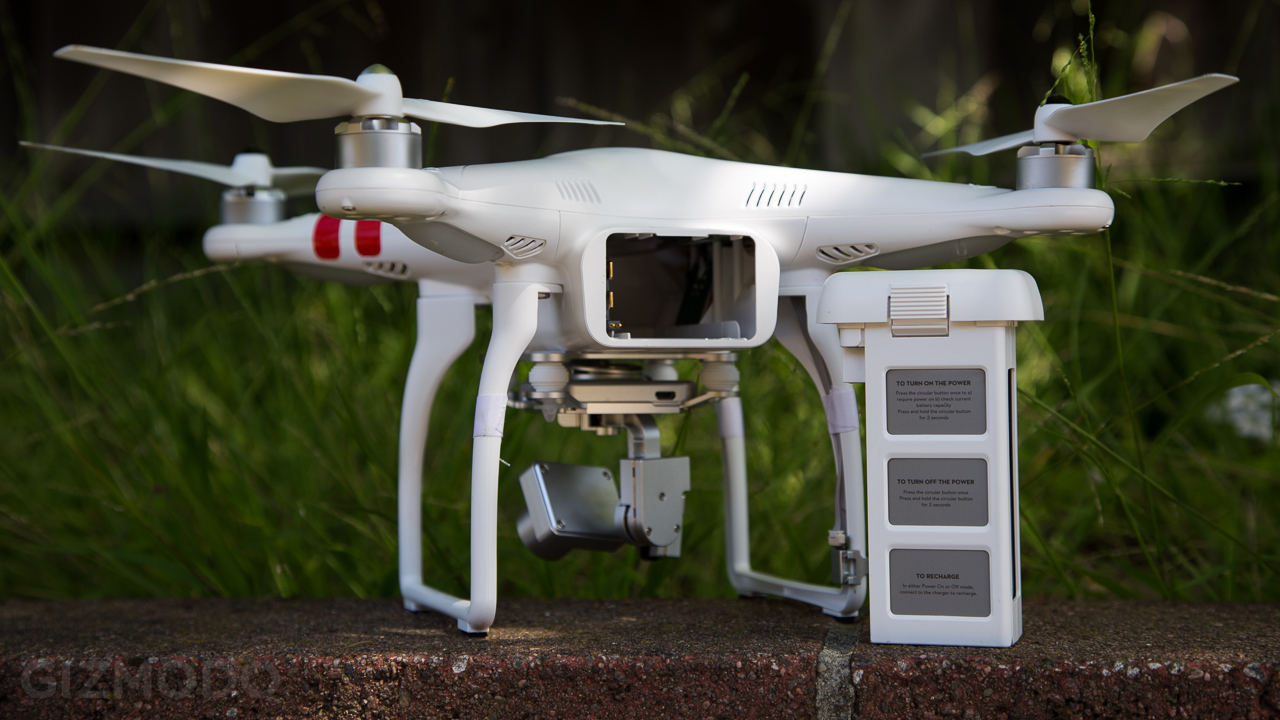
The copter is powered by a 5200mAh Li-Po battery which is easily swappable (spares will run you about $US160). There’s also a remote control that features two joysticks, two 3-position switches, and a power-switch. Attached to that is a phone clamp and a Wi-Fi range extender. It creates a local Wi-Fi network you pair your phone (Android or iOS) with, and it uses its own rechargeable internal battery juice to stay connected with the Phantom even when it’s 670 metres away. Using DJI’s app, you can see what the camera sees, start/stop video, take stills, tilt the camera (up to 90 degrees), adjust camera settings, and see important flight data, like distance, altitude, speed, and battery level.
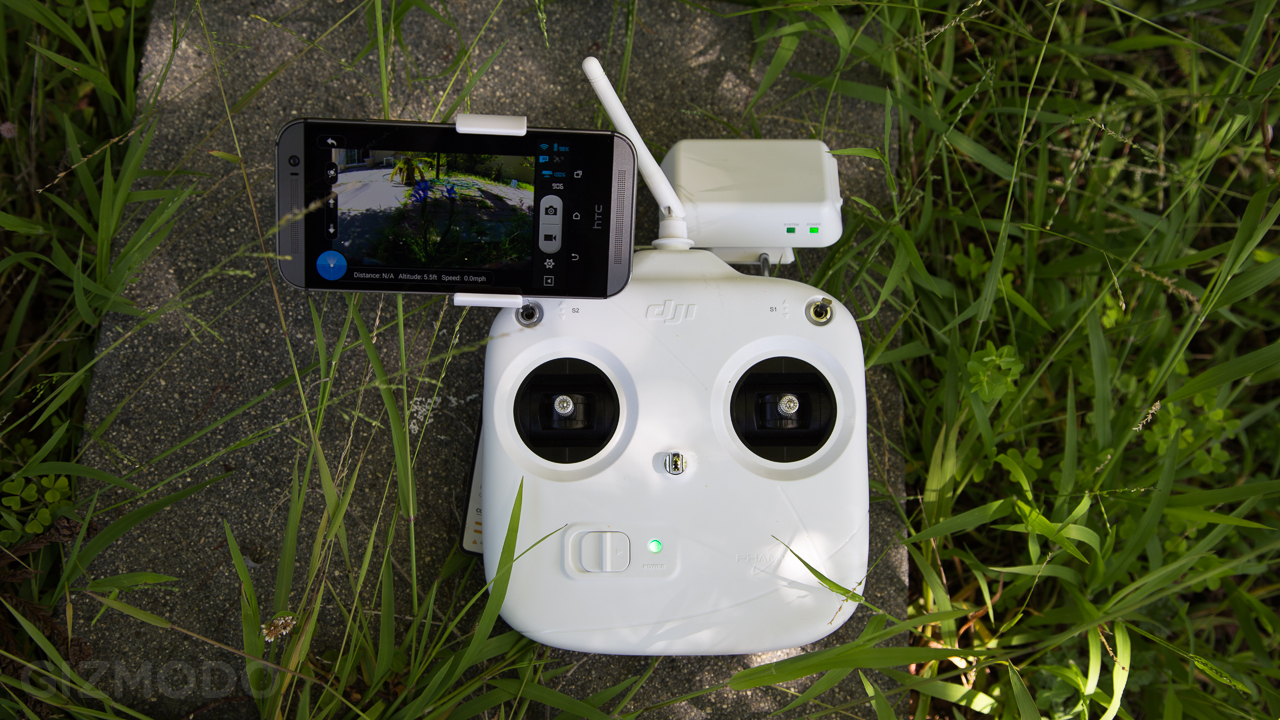
Also, and I blush to admit this. But when I was first testing the original Vision, I was just learning how to fly it, and it was windy… and I crashed it into a tree. When it was about 10 metres off the ground. It dropped like a rock hit the hard ground. The camera broke off. It was miserable. Then I reattached the camera and WHAAAT IT STILL WORKED! This is to say that it’s very well-made. I don’t know if the Vision+ could survive such an impact because the gimbal looks a bit more delicate, but I would no longer be shocked if it did. Really solid.
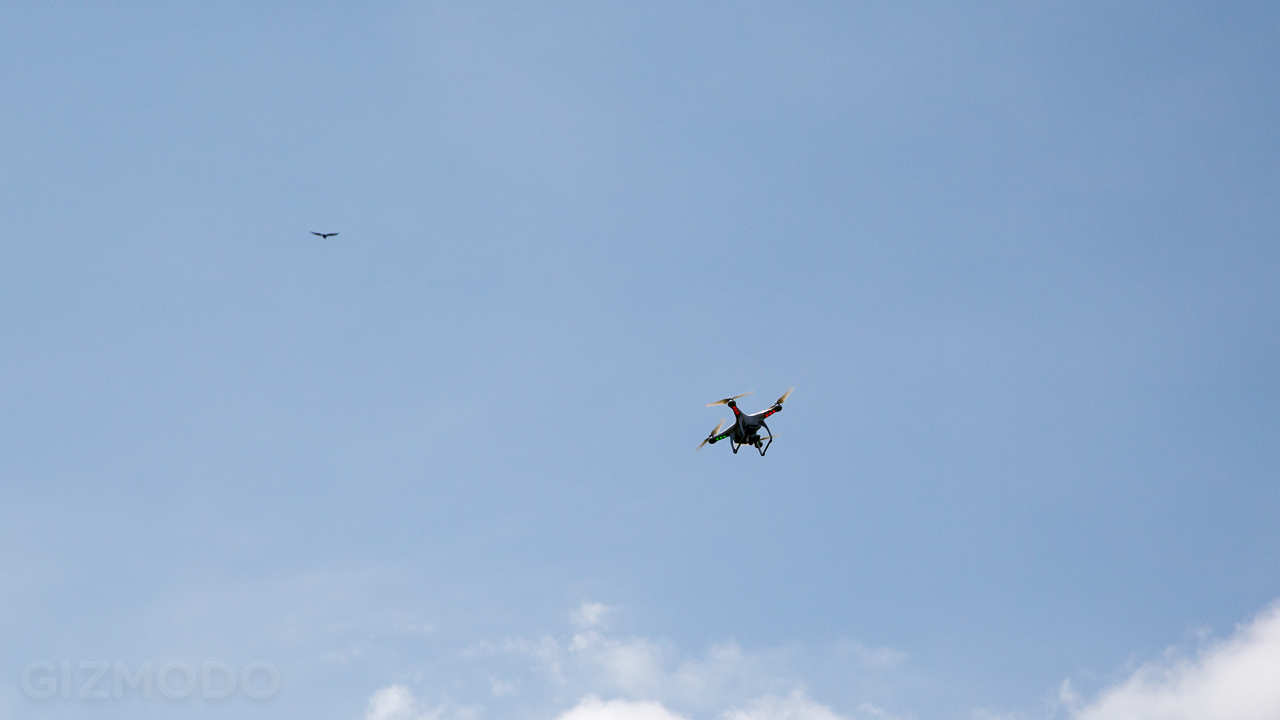
Using It
Oh man, these things are fun to fly. They just go so fast, so far, and so high. The plastic makes them kind of look like a kids’ toy, but don’t be fooled. These things are no joke. You could do some serious damage with them and, yes, even land yourself in jail. Does this make them more fun to fly? Of course. Just don’t be stupid.
Now, these things are far from just flip a switch on and start flying. They’re deceptively complicated, and the instructions leave a lot to be desired. Before you start flying you’ve got to power on the copter, the remote, and the Wi-Fi repeater, then pair your phone with the repeater (which often takes a long time for some reason), and start the app. Then you need to flick the top right switch a bunch of times until the copter lights turn yellow. Then pick up the copter, rotate it around the Z axis, then turn it 90 degrees so the camera is pointing down, and do another full 360 around the new Z access, which calibrates the compasses. If you did all of that right, then the lights will turn green (as long as you have GPS lock), and you’re ready to start flying. So intuitive!
To start the rotors spinning, you push the two joysticks to the lower-inside corners. The left joystick controls altitude and rotation (i.e. which way it will face). The right joystick controls pitch and roll (i.e. makes it travel forward, backward, or side to side). When you start out it’s definitely easiest to just deep the copter pointed away from you and not even mess with the rotation. Once it gets turned around all of your controls are backwards, and that makes it a lot easier to get into trouble until you get used to it.
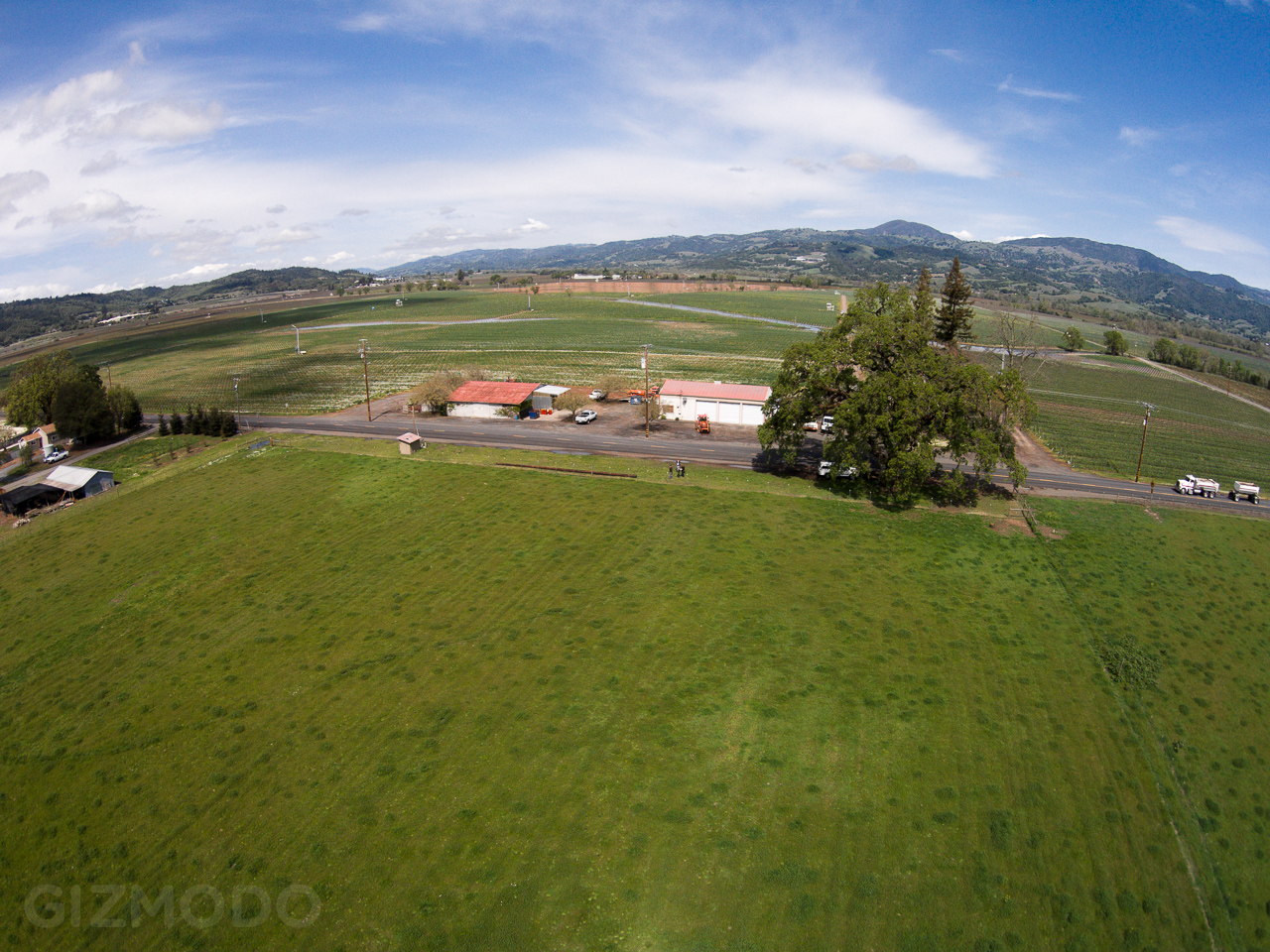
It takes a lot of practice to get good at flying this thing. You’ll be tempted to just start flying around as fast as you can. Resist this urge. It can go 55km/h, which is plenty fast enough to do some real damage (to people, things, or at the very least, to your new and expensive quadcopter). We also took it out to the middle of nowhere in wine country (CA), carefully looked around for other aircraft, and then maxed out the altitude. We got it up to about 280 metres before the remote could no longer reach it and we lost control.
Losing control isn’t quite as scary as it sounds, though. The Phantom 2 Vision+ (like the Phantom 2 before it) has GPS and built in altimeters. If it loses contact with the remote, it will slowly start returning down to where it last had contact. You can then flip the top right switch down and then back up, to take control again. We did this several times and it worked perfectly. It also has a return home feature, which is great in case the remote’s batteries die. We launched it off of a manhole cover, sent it 50 yards away, and then turned off the remote. The Phantom rises to a height of 45 metres (so as to avoid ground obstacles), then returns to the spot where you originally launched it, and powers down. In our test, it landed about four feet away from the original spot. Really impressive! That said, we’ve heard some horror stories about this feature when launching off a boat. The GPS also means it will more or less stop and stay in one place if you let go of the sticks, though it does drift a bit more than we’d like.
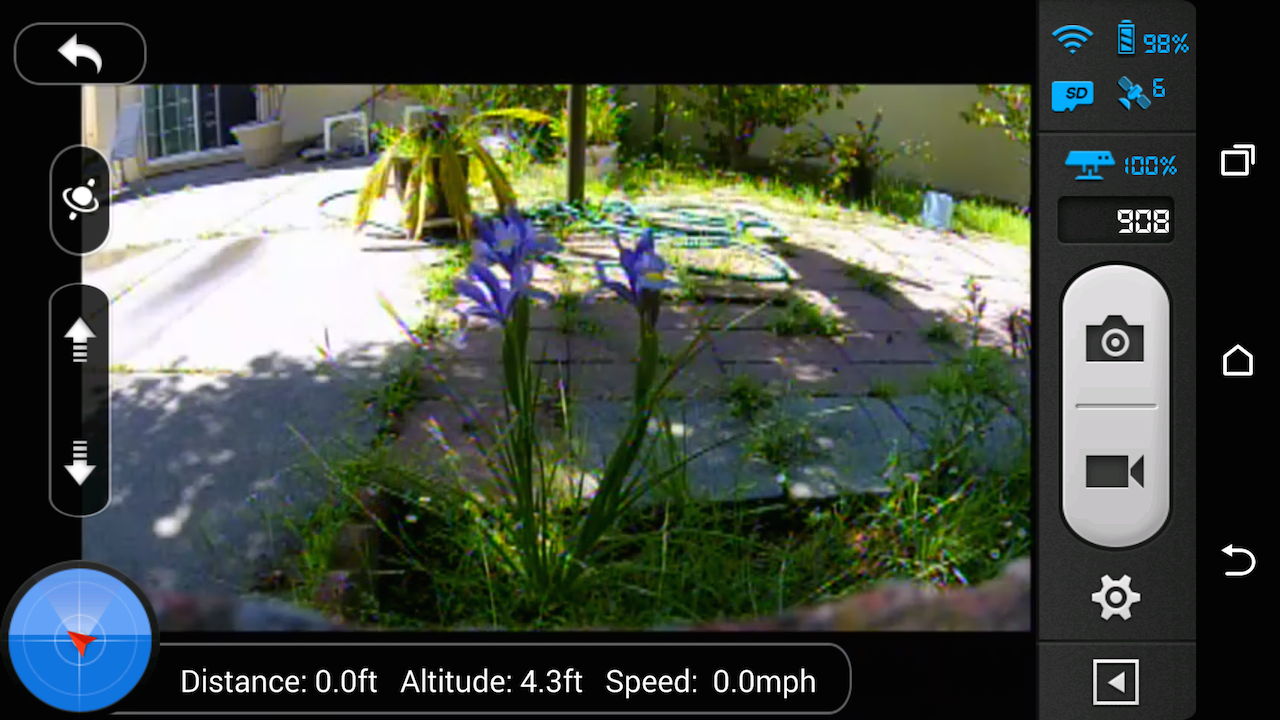
Using the app to control the camera is nice and intuitive. Just hit the up or down arrows to adjust the camera’s tilt, and start/stop recording video with the press of a button, or capture a still. It supposedly can send video to your phone in realtime, at 30 frames per second, but we never got anything nearly that good in our testing. Video would freeze completely for ten seconds at a time, then play a little, then freeze again. Definitely not reliable enough to fly from the camera’s POV alone, which is disappointing. It can capture stills in JPG or Adobe DNG raw files, which is a cool feature, but when you snap a shot the screen goes black and doesn’t wake back up for about nine seconds, which is a very long time to be in the dark. Everything is saved to a micro SD card, which is quite convenient.
After several practice sessions I started feeling more confident with it. The battery lasts for about 25 minutes of flight time. Eventually you get the timing down for doing high-speed banking turns, and it’s incredibly satisfying. It’s also just incredible to get these majestic, sweeping shots from high above a beautiful landscape (or maybe just the small town you grew up in). It’s the kind of thing that wasn’t accessible to amateurs just a couple years ago, and it really does inspire a feeling of awe.

Comparison
Check out the video at the top and it is very easy to see that the stabilisation gimbal makes a gigantic difference. Look at footage shot from the original Phantom 2 Vision (starting at 1:45 in the video above). Every little turn and gust of wind shakes the shot like crazy. The shots immediately following it show the Vision+ making abrupt changes in direction, and there’s no jerkiness to it at all. When the original Vision climbed higher you can see a noticeable shake in the camera from the motors. There is no trace of that shake in the Vision+ shots that immediately follow. In other words, the gimbal does its job impeccably well.
Compared to the GoPro Hero 3+ Black edition video quality doesn’t quite measure up. It’s a little hard to see, because while both were set at their widest settings, the Vision+ maxes out at 140 degrees, where the Hero 3+ goes to 170, so things look a bit smaller. In reality, detail is much sharper in the GoPro. The Vision+ suffers from a lot of compression noise. Little things look blocky, and moiré is a constant problem in thins with patterns, like rooftops, brick walls, and even grass. There’s also a fair amount of lens distortion, colours skew too warm, and there is just a ton of ISO noise in low-light.
That’s not to say that the camera is bad. It isn’t. It just isn’t as good as the current best action camera out there.
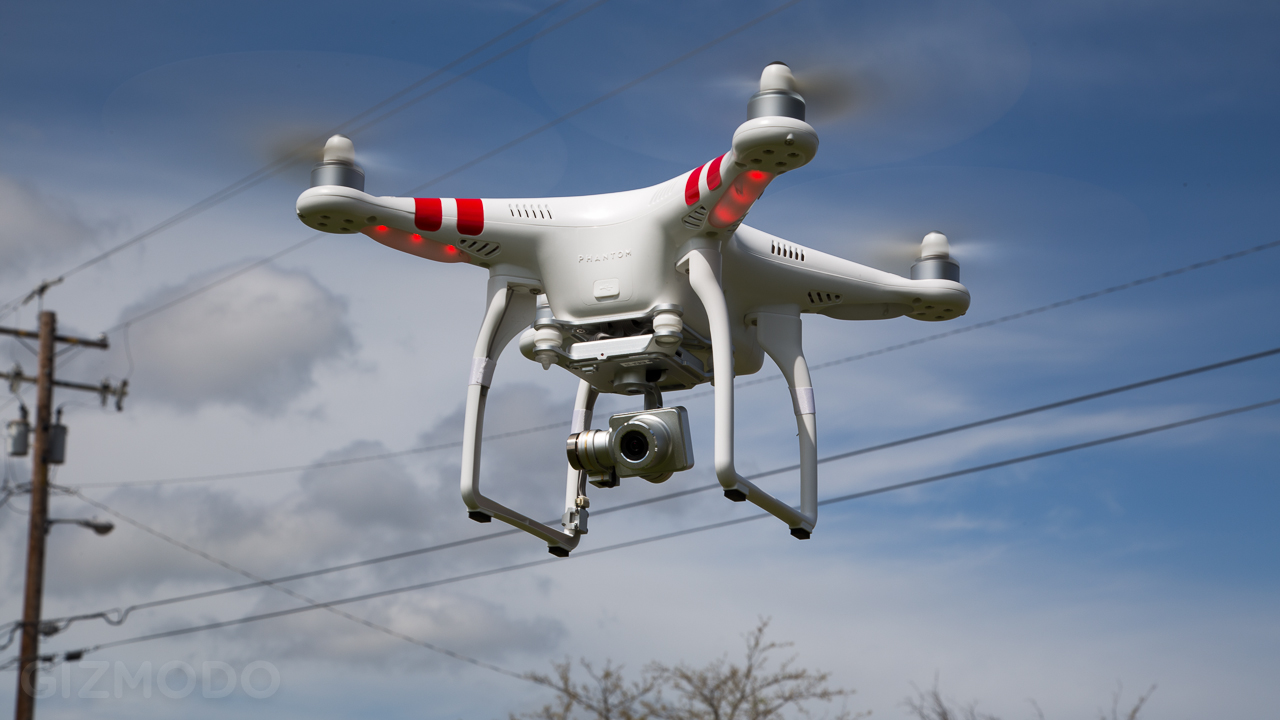
Like
It’s so fun to fly! Seriously, it’s one of the coolest toys I’ve ever played with. Ever. Everybody who tried it came away grinning. Once it’s all set up, it’s really pretty easy to fly, as long as you don’t get carried away and go to fast/high. The GPS features are all fantastic and may be a literal life-saver. The Wi-Fi repeater is a really smart idea, and being able to adjust the camera with your phone is fantastic. The JPGs it takes are fine, but if you don’t mind tweaking your photos later, shooting in DNG is really nice. The POV stills embedded in this post were all shot in DNG and then tweaked in Adobe Lightroom.
Also, it just goes so damn high, and can fly so fast. It’s really incredible, and if you get good at flying it, you’ll be able to make some pretty epic videos, especially if you and your friends are into outdoors/action sports. Battery life is really pretty good, and the fact that you can swap them out (and the remote will warn you when you need to) is nice. It’s just a really well-made gadget.

No Like
Setup is really unintuitive. While it’s supposed to basically hover in place when you let go of the joysticks, this wasn’t totally reliable. There’s way too much lag in the video to be able to fly it by the camera alone. The long screen blackout in between taking stills really needs to be fixed.
Here’s a major problem. When the battery gets to about 8-per cent, it just stops. And by “stops” I mean falls out of the sky! This happened to us twice, before we decided to just quit flying when it hits 15-per cent. It survived both falls from about six fit, but we were very lucky that we didn’t have it higher. Also, powering off the rotors is done the same way as powering them on: you press the two joysticks down and to the inside. Here’s the problem: You could easily do that by accident while you were just flying around. Granted, it would be an odd manoeuvre (descending while backing up and turning), but it’s not unthinkable that you’d accidentally do that while you were learning, and again, the causes it to drop like a rock. Powering off should be something than can only happen when the drone is safely back on the ground, and that needs to be fixed.
Despite being an all-in-one system, there are a bunch of components that need to be juggled. The drone’s battery and the Wi-Fi extender must both be charged separately, but the remote control (which the extender is attached to) takes 4 AA batteries (and don’t forget to charge your phone, too). Kind of annoying.
Also, it must be said that the instructions are really lacking. A large part of it is that the manuals were clearly translated from Chinese, but even trying to find the tutorial videos online is extremely frustrating. There are all kinds of advanced modes that we wanted to try, but often following the instructions failed to switch the mode like it was supposed to.
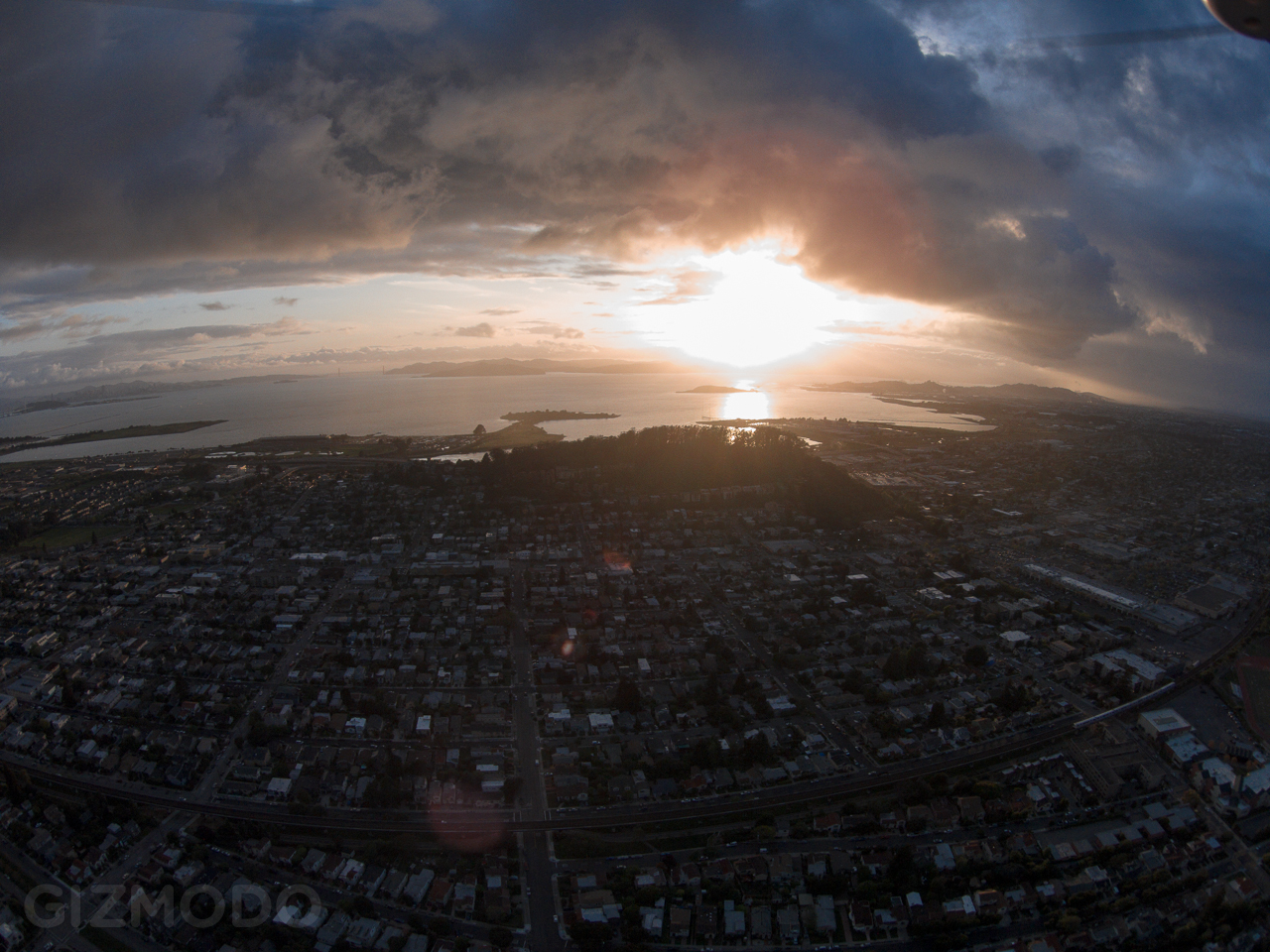
Should You Buy It?
OK, so this thing is really, really, really fun and it’s handily the simplest way to get stabilised arial video. That said, it’s $US1300 (or $US1370 for the kit with an extra battery, which is definitely worth it). For just a bit more, you could buy the Phantom 2, the Zenmuse H3-3D gimbal (which is essentially the same as the gimbal on the Vision+), and a GoPro Hero 3+ Black. It might run you a little more, and it wouldn’t be as simple as the all-in-one system, but then again, you’d also have a Hero 3+ you could use for other applications, and image quality would definitely be better.
That said, if you just want something to fly around like crazy (to shoot your friends surfing, or whatever), and you don’t want to deal with juggling all the different components, then this system is awesome. [DJI]
